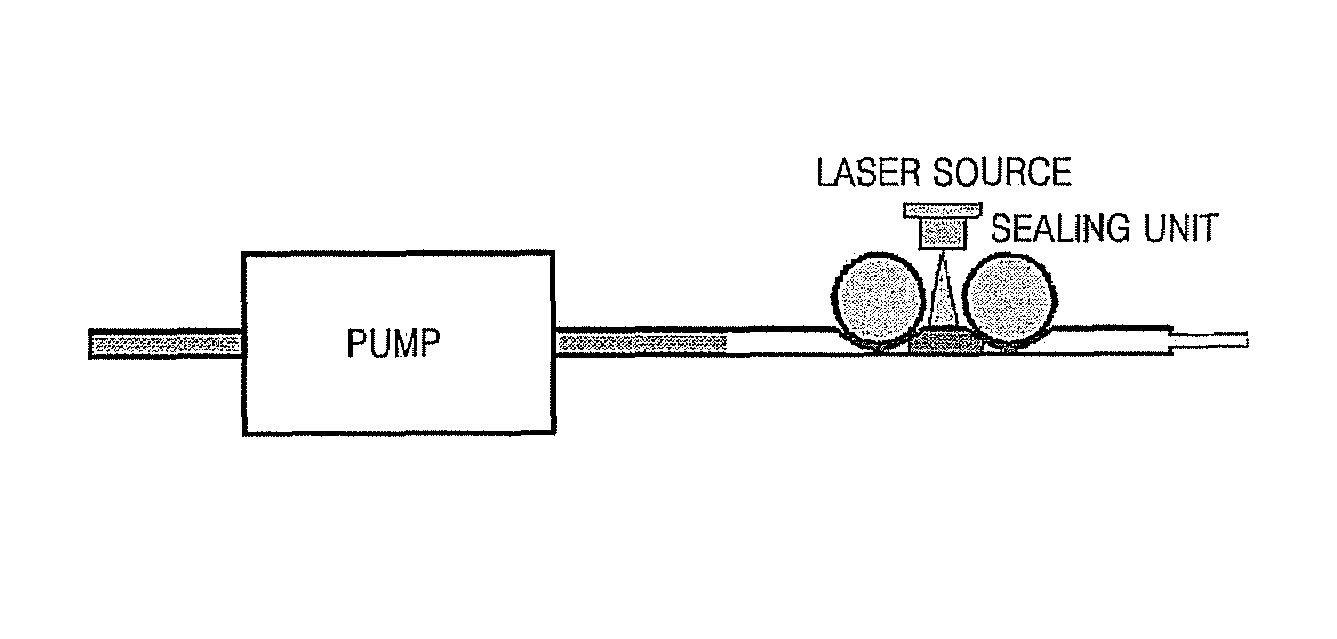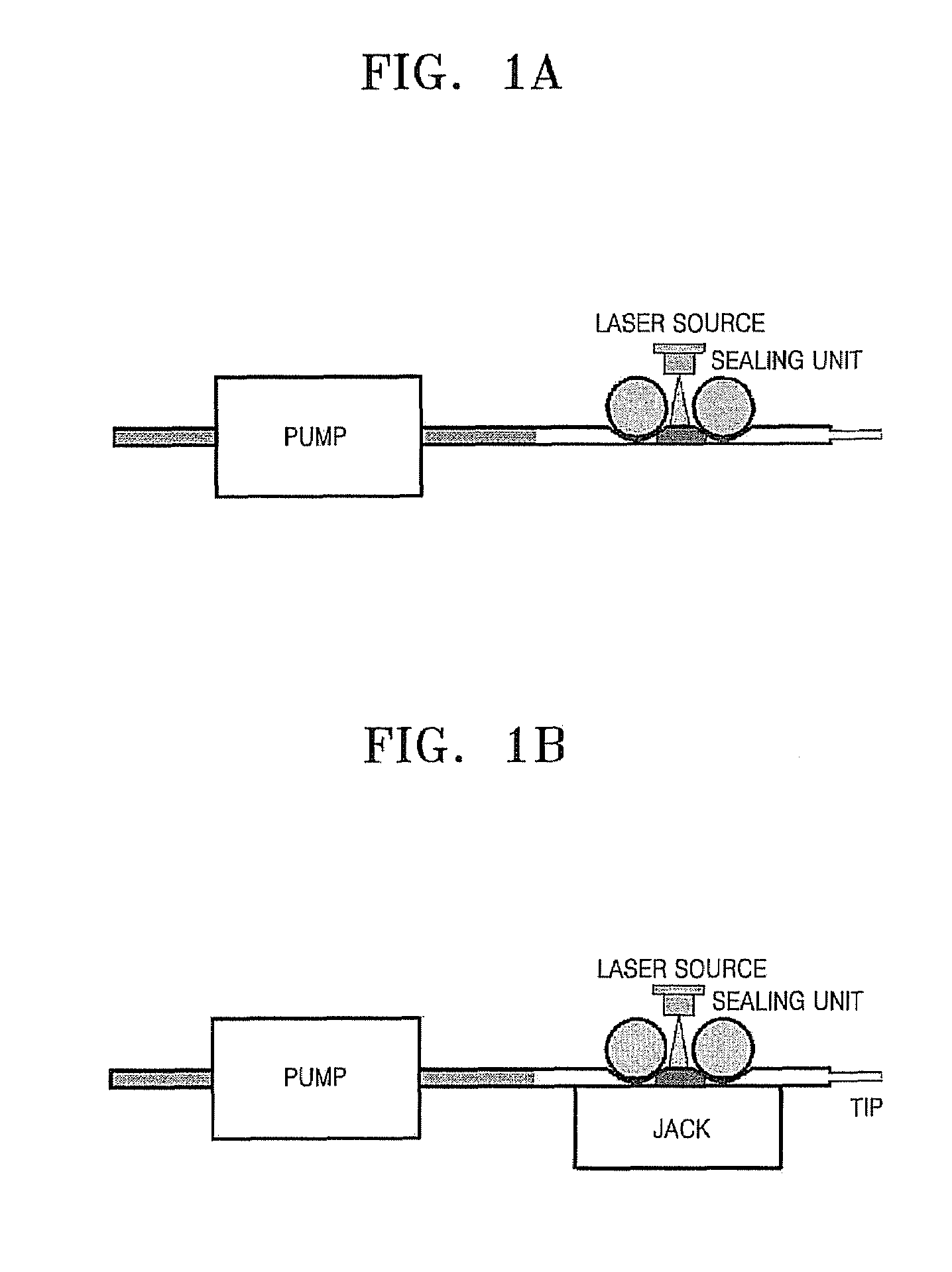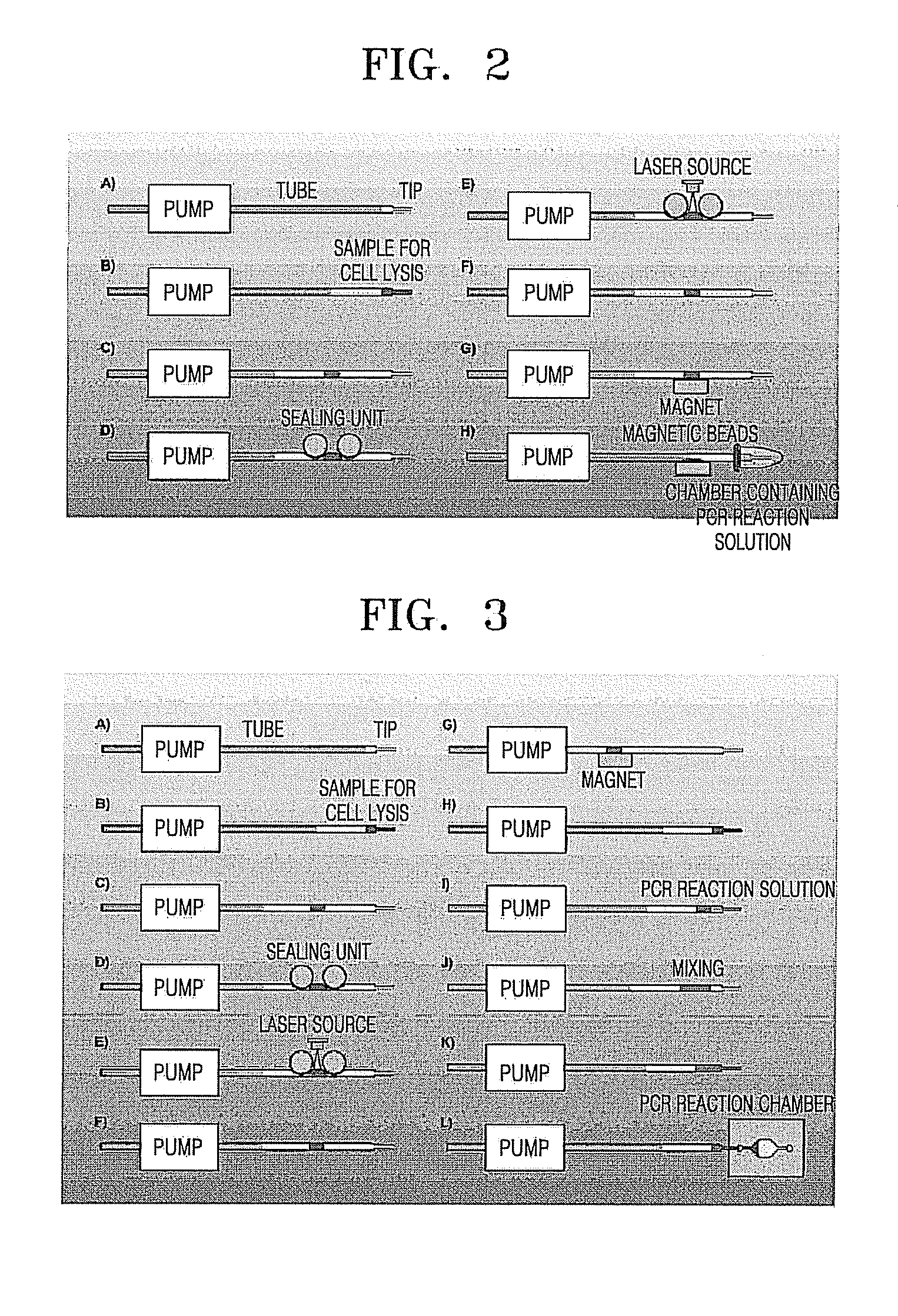Device and method for rapidly lysing cells or viruses
a technology of cells or viruses and lysing devices, which is applied in the field of devices and methods for rapidly lysing cells or viruses, can solve the problems of affecting the pcr reaction, cell lysis, and harsh chemicals used to disrupt cells
- Summary
- Abstract
- Description
- Claims
- Application Information
AI Technical Summary
Benefits of technology
Problems solved by technology
Method used
Image
Examples
example 1
[0051]The elements of a cell lysis device according to Example 1 comprise the following:
[0052]Cell Lysis Tube: Tygon® R-3607, inner diameter 0.38 mm, outer diameter 2.20 mm, length 400 mm;
[0053]Sample Inlet (Tip structure): Poly(ether ether ketone) (PEEK) tube, inner diameter 0.4 mm, outer diameter 0.25 inch;
[0054]Pump: Peristaltic pump (ISM596A, Ismatec S A, Switzerland);
[0055]Sealing unit: two rods (SUS rod), diameter 0.5 inch, interval between the centers of the rods: 25 mm;
[0056]Laser source: Laser diode L8446-42 (Hamamatsu Photonics K. K.).
[0057]Additionally, the cell lysis device used in the examples below comprised a magnet.
example 2
Cell Culture
[0058]Cells of Streptococcus mutans, for subjection to cell lysis using the device and method of the invention, were cultured in a brain heart infusion (BHI) medium at 37° C. under vigorous aerobic conditions, until the logarithmic phase was reached (OD600=0.5 to 1.0). The cells were harvested by centrifugation and were washed two times with 3 ml of phosphate buffered saline (PBS). The washed cells were resuspended in PBS.
example 3
Confirmation of Cell Lysis
[0059]The cell lysis tube was filled with water by operating the peristaltic pump of the cell lysis device produced in Example 1. Next, air was introduced into the cell lysis tube in order to prevent contact between the water and the sample.
[0060]Subsequently, a sample solution was prepared by mixing the cells cultured in Example 2 and magnetic beads (size: 1 μm, MyOne™ carboxylic acid, Invitrogen Corporation, Norway) to a final concentration of 1×108 cells / ml and 10 beads / μl, respectively. A volume of 3.9 μl of the sample was introduced into the cell lysis tube through the tip of the sample inlet.
[0061]The sample was transferred to a specific position (position of laser irradiation) in the cell lysis tube, by operating the peristaltic pump in the cell lysis device.
[0062]Then the two rods of the sealing unit were used to temporarily seal the region of the tube where the sample was placed.
[0063]Then a laser diode was used to irradiate the sample at a power o...
PUM
 Login to View More
Login to View More Abstract
Description
Claims
Application Information
 Login to View More
Login to View More - R&D
- Intellectual Property
- Life Sciences
- Materials
- Tech Scout
- Unparalleled Data Quality
- Higher Quality Content
- 60% Fewer Hallucinations
Browse by: Latest US Patents, China's latest patents, Technical Efficacy Thesaurus, Application Domain, Technology Topic, Popular Technical Reports.
© 2025 PatSnap. All rights reserved.Legal|Privacy policy|Modern Slavery Act Transparency Statement|Sitemap|About US| Contact US: help@patsnap.com



